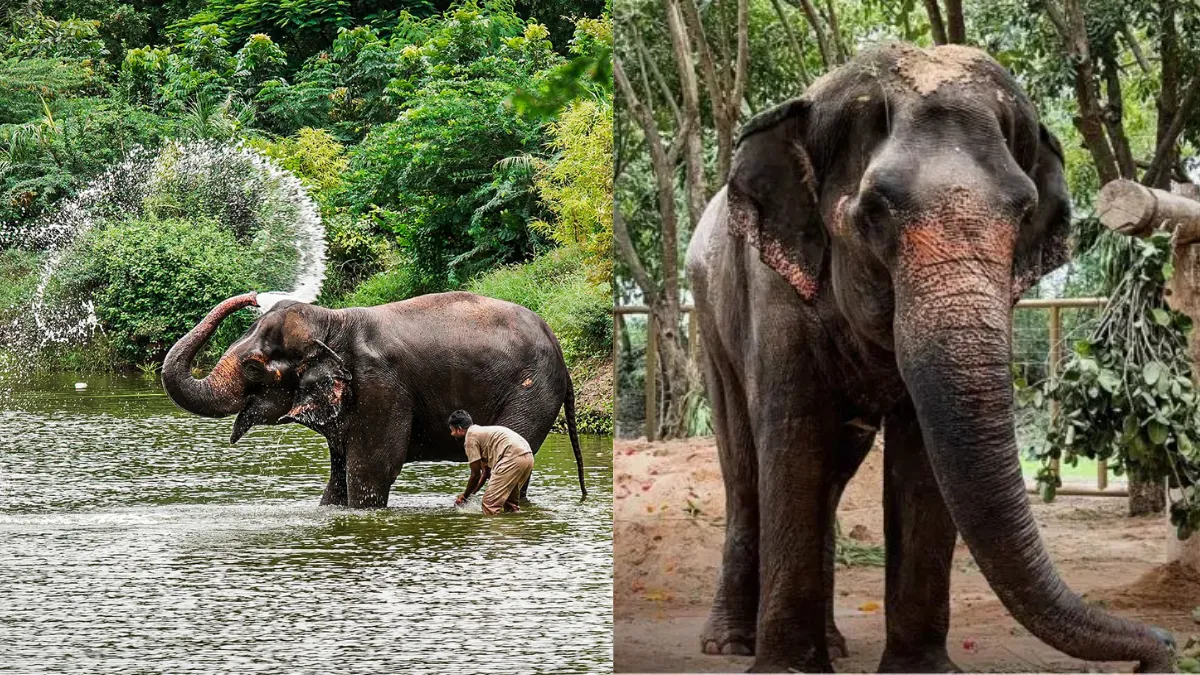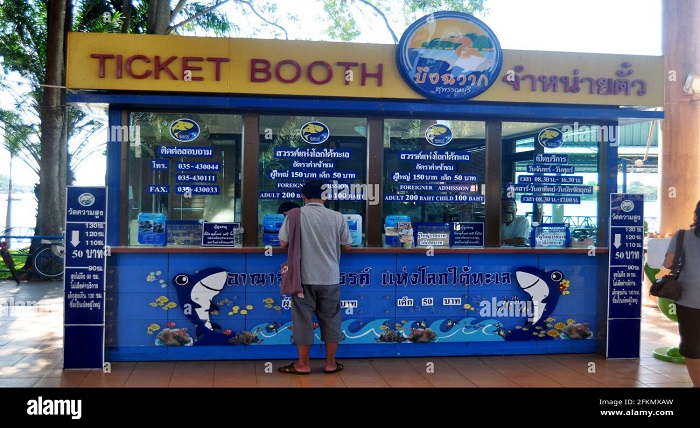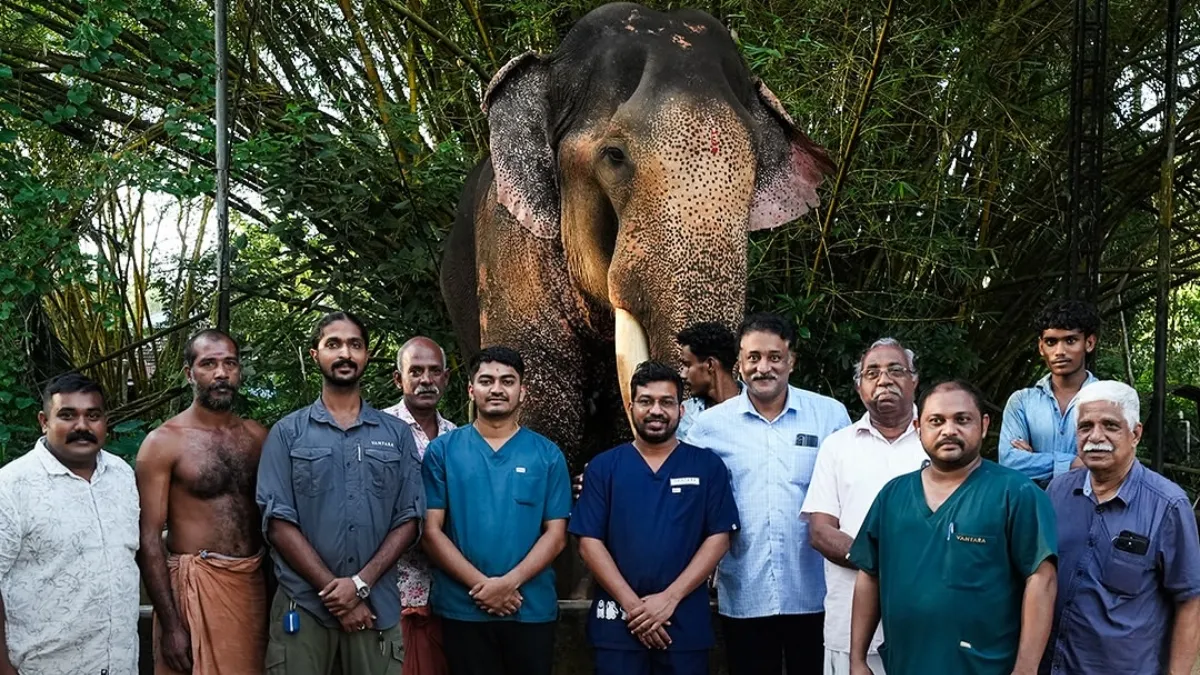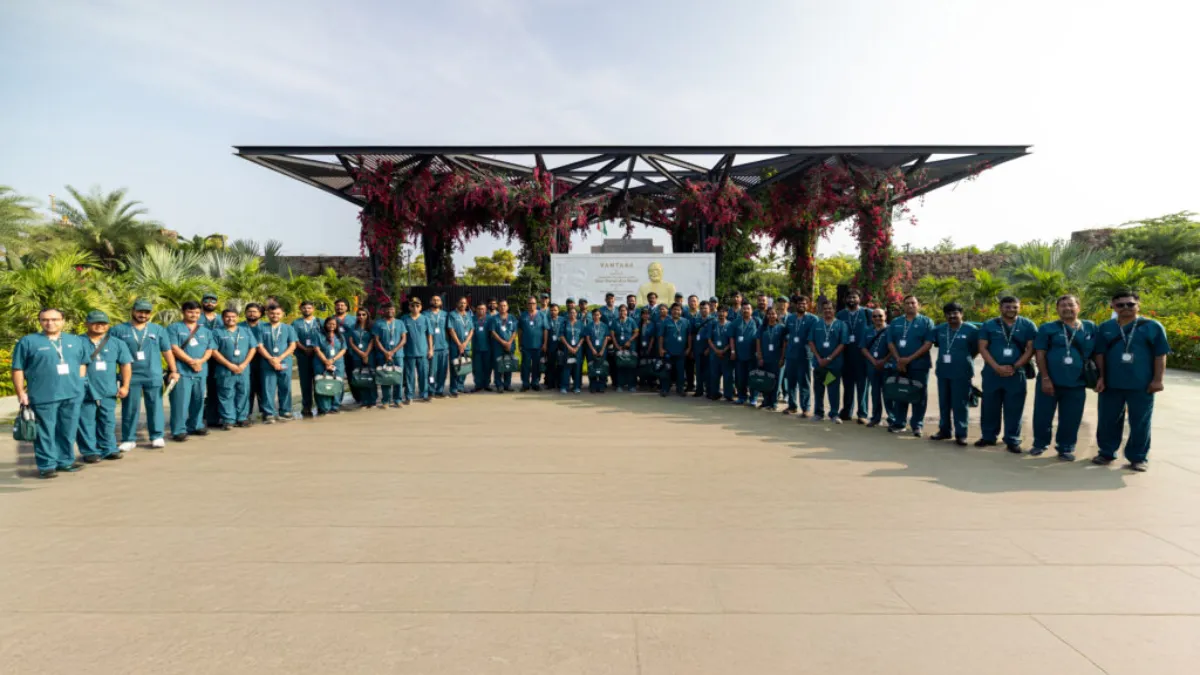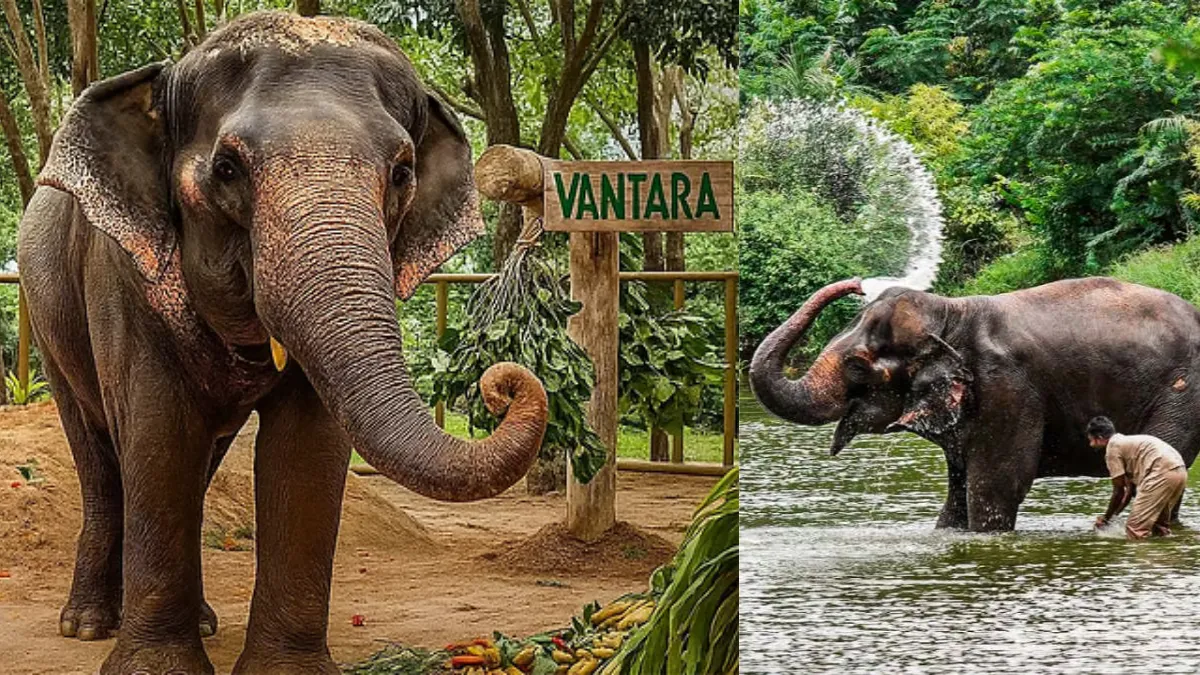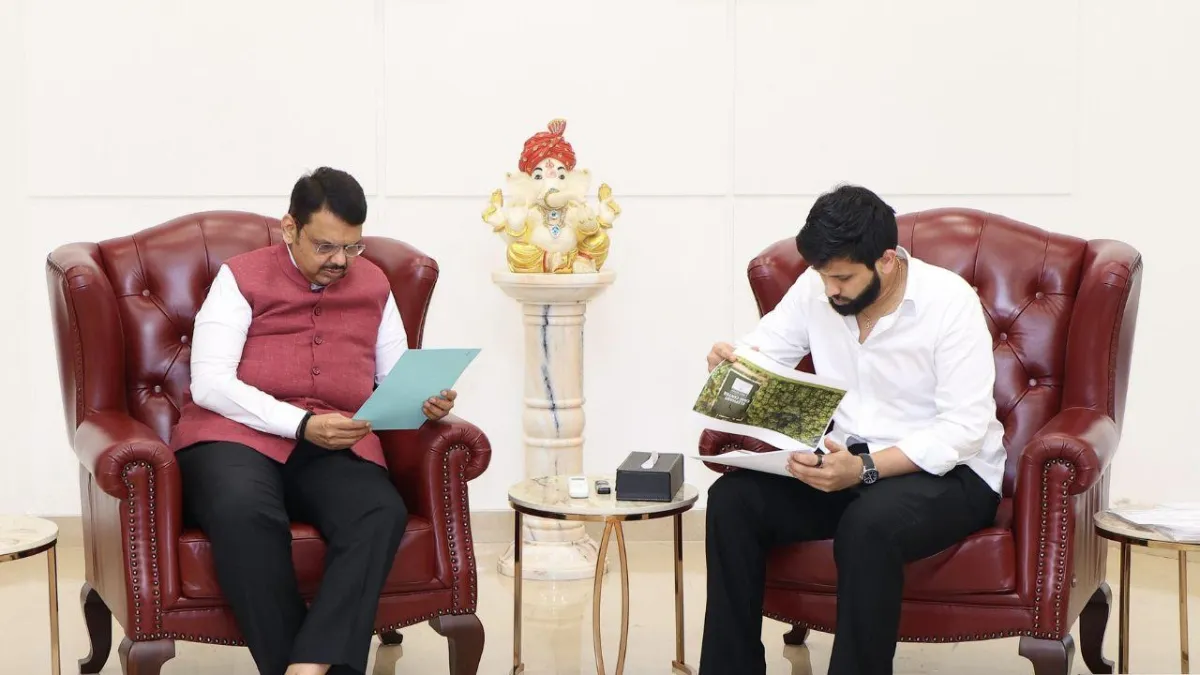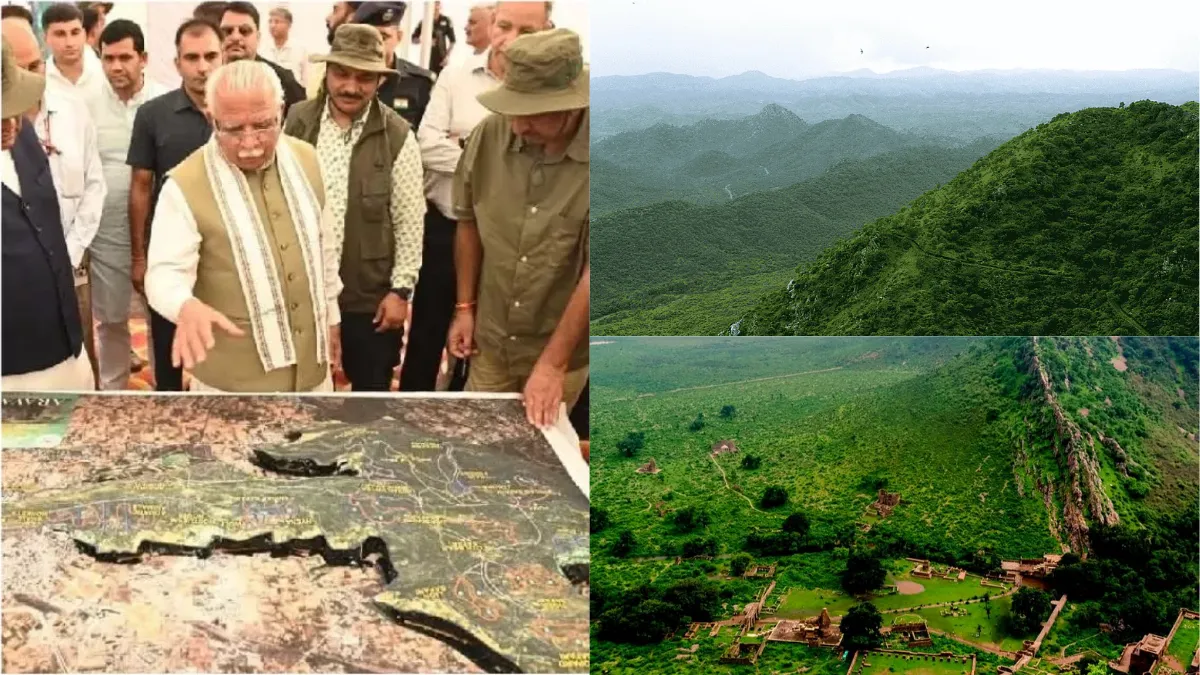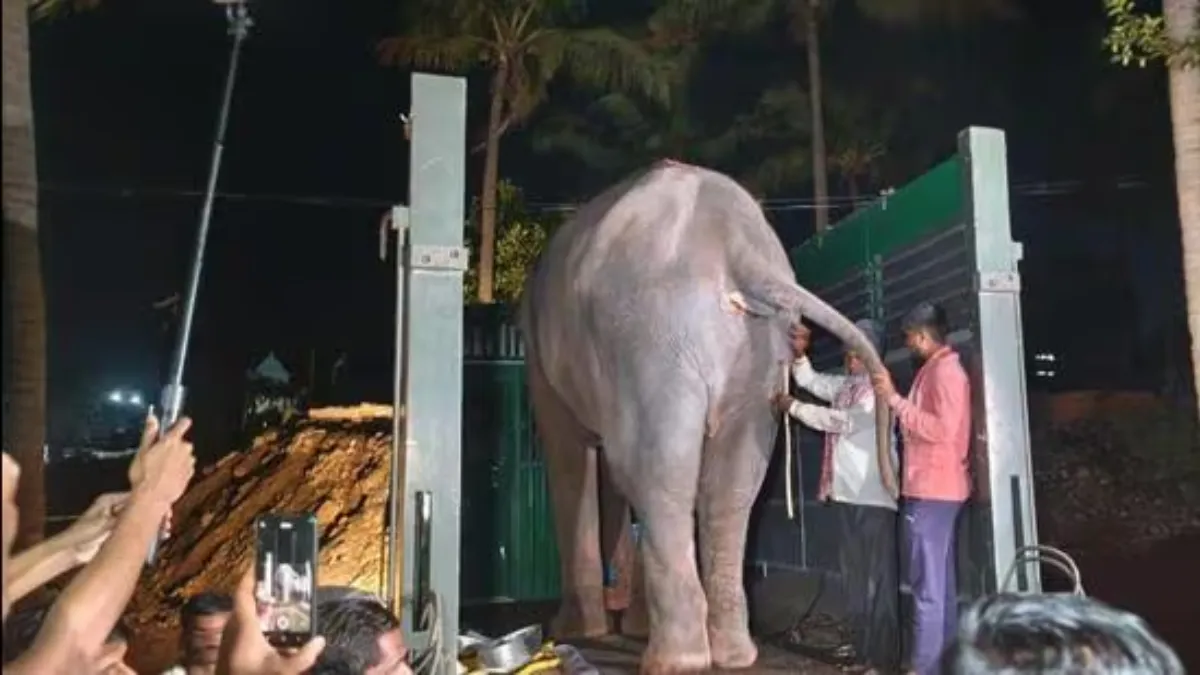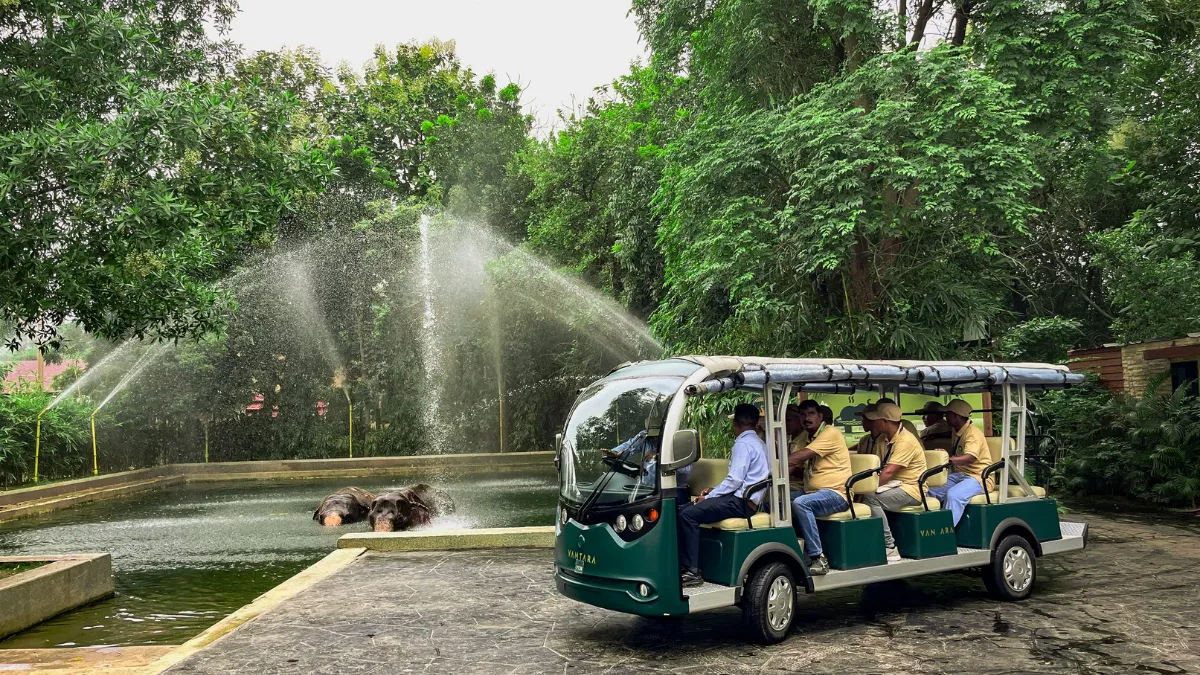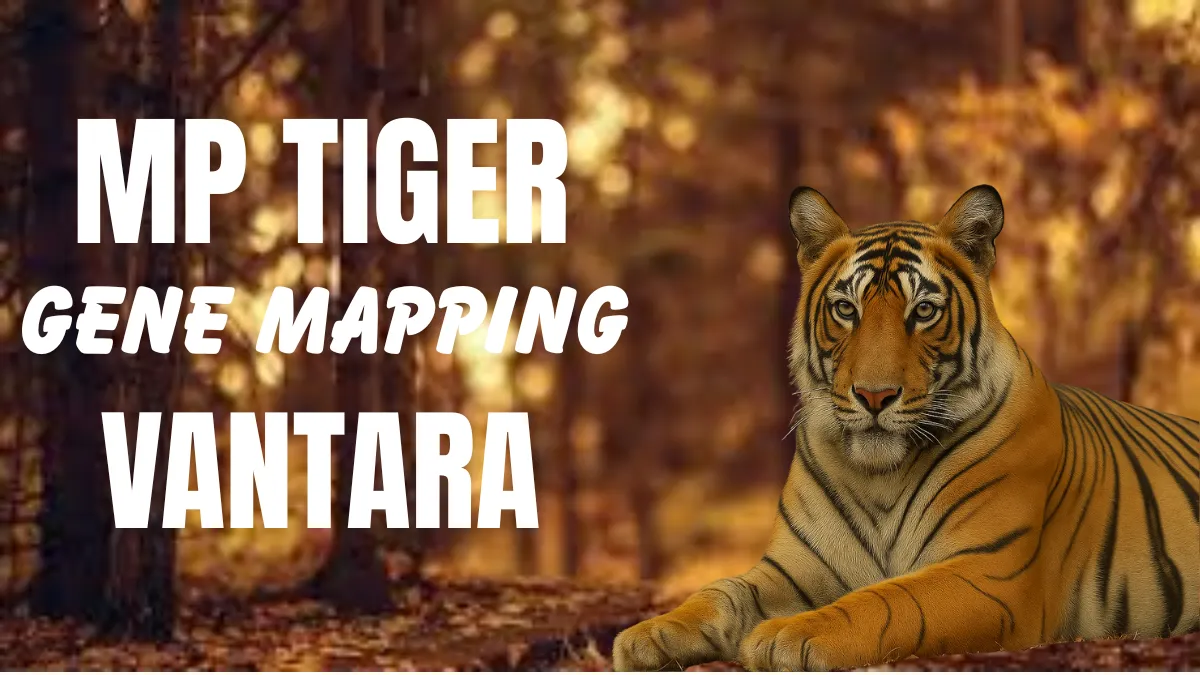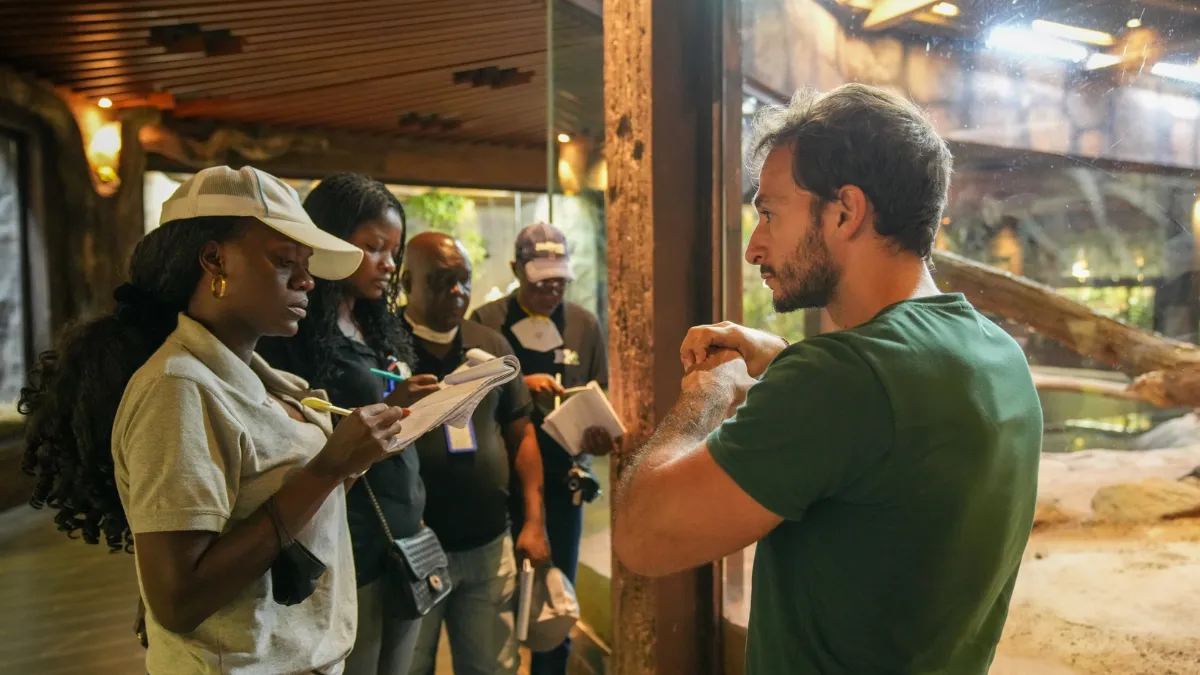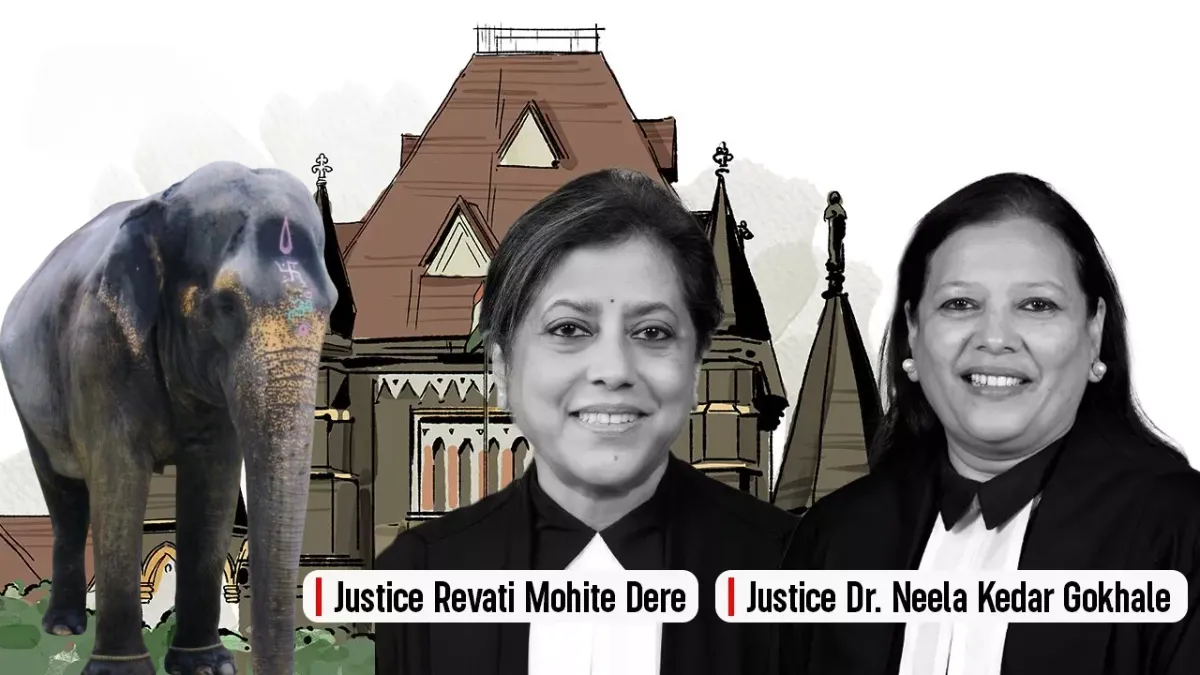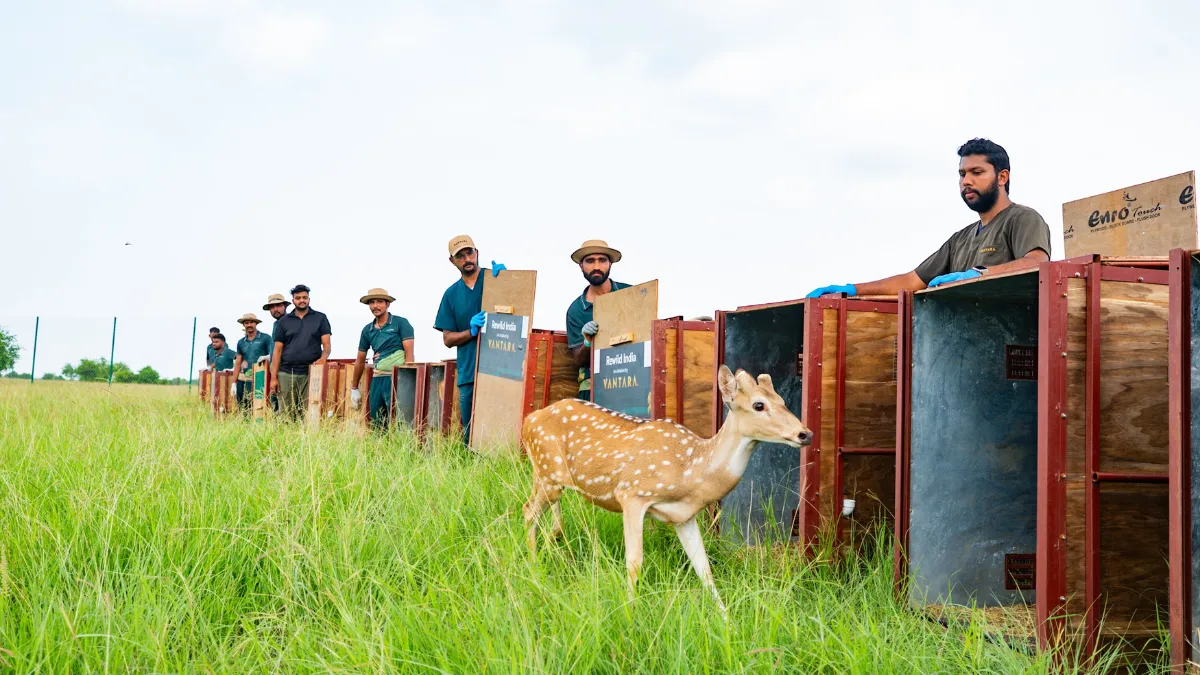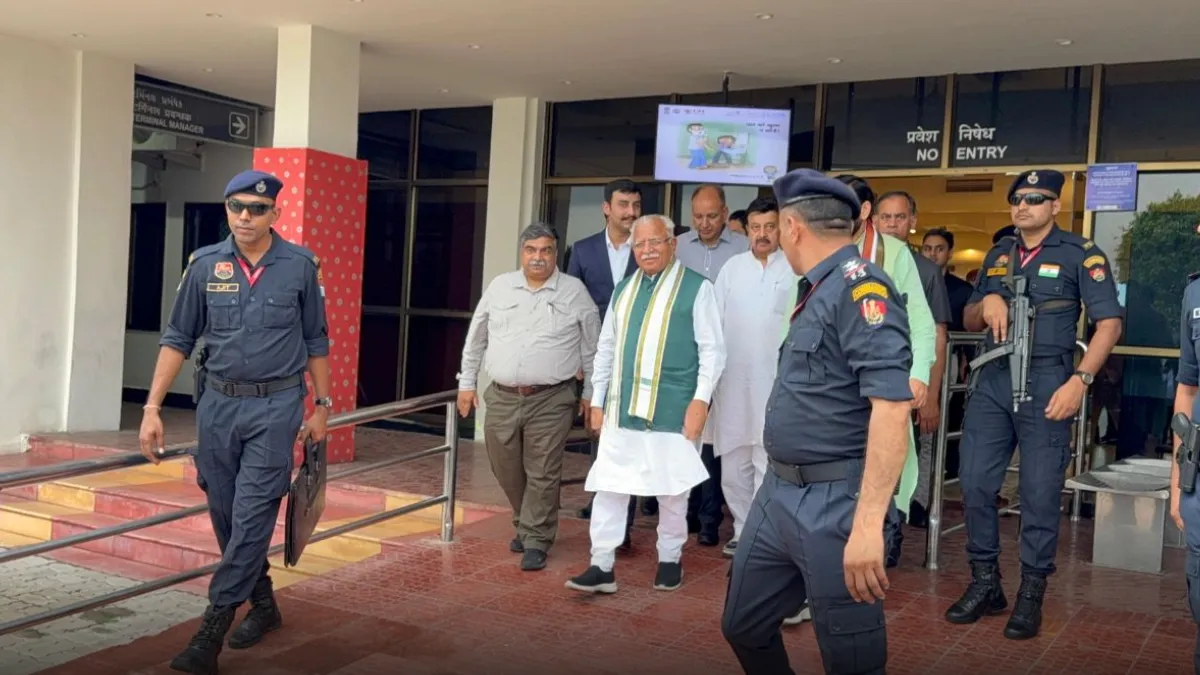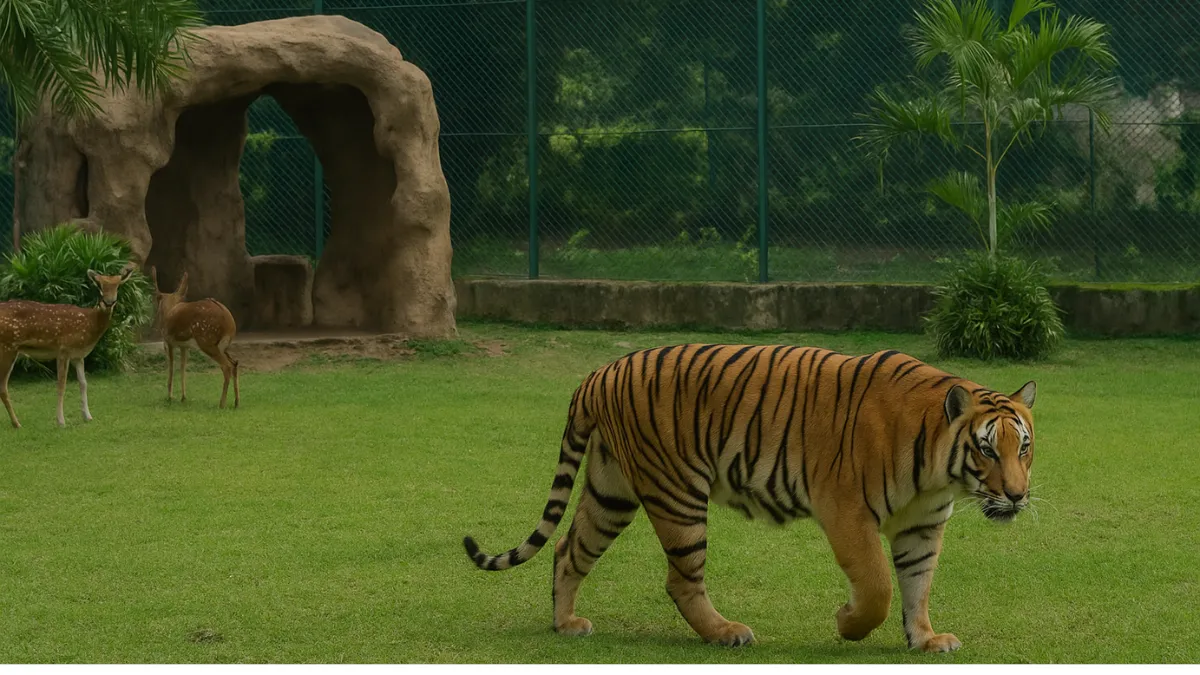Vantara Elephant Mahadevi has once again placed Reliance-owned Vantara in the national spotlight, as the Supreme Court of India dealt with two high-profile petitions concerning the treatment and management of captive elephants and other wildlife at the facility. On August 14, the apex court directed the petitioners to amend their petitions, include Vantara as a respondent, and resubmit them before the next hearing on August 25, 2025.
Background: What Is Vantara?
Vantara, located in Jamnagar, Gujarat, is a zoo and rescue-and-rehabilitation centre owned by Reliance Industries. It has been at the centre of heated debates in recent years, following allegations about how it acquires and manages wildlife, including endangered species. The facility claims to operate strictly within the legal framework, following both national laws and international wildlife trade regulations such as the Convention on International Trade in Endangered Species of Wild Fauna and Flora (CITES).
One of the most recent controversies revolves around the female elephant Madhuri, also known as Mahadevi, whose transfer from a religious institution in Maharashtra to Vantara triggered massive public protests.
Also read: Vantara Proposes New Facility in Kolhapur for Elephant Madhuri
Supreme Court Proceedings on August 14
On August 14, the Supreme Court heard two separate petitions regarding Vantara and its treatment of captive elephants and other animals.
First Petition: Wildlife Imports and Operations Inquiry
The first petition, filed by petitioner Dev Sharma, sought a comprehensive investigation into all wildlife imports and conservation-related operations undertaken by Vantara and the Radha Krishna Temple Elephant Welfare Trust since 2020. The petition also demanded:
- Verification of CITES permits that allowed animals to be brought into India for Vantara.
- Scrutiny of Vantara’s gene bank claims.
- Examination of breeder legitimacy and source-country clearances.
- Compliance checks with the Biological Diversity Act, 2002, and India’s obligations under the Convention on Biological Diversity.
“The law and rules have been violated. State administrations failed; some officers were compromised while others were threatened. Captive elephants were forcibly taken from temples and their owners,” the petition alleged.
The petitioner further claimed that internationally endangered animals and birds were smuggled into Vantara under the guise of a wildlife rescue initiative.
Also read: Vantara to Build Rescue Centre for Elephant Madhuri in Kolhapur, Says CM Fadnavis
Court’s Response to the First Petition
A bench comprising Justices Pankaj Mithal and Prasanna Varale questioned Sharma on why he had not first approached the Central Zoo Authority or other relevant authorities before coming directly to the Supreme Court.
“Don’t file such vague petitions,” the bench warned, according to Indian Express.
However, the court allowed Sharma to add more factual details to his petition and refile it within five days.
Second Petition: Release of Captive Elephants
The second petition, filed by C.R. Jaya Sukin, demanded that all captive elephants housed at Vantara be returned to their original owners and that other rescued animals and birds be released into the wild.
During the hearing, the court noted that Vantara was not listed as a respondent in the case despite serious allegations being made against it.
“You are making allegations against parties which are not represented here. You have not made them respondents. You implead them and then come back to us, we will see,” the bench said.
The court has scheduled the hearing of both petitions for August 25, 2025.
The Vantara Elephant Mahadevi Controversy
A central reason Vantara is currently under intense public and legal scrutiny is the case of Madhuri, also called Mahadevi.
Madhuri, a female elephant, had been in the care of the Swastishri Jinsen Bhattarak Pattacharya Mahaswamy Sanstha—a Jain mutt in Nandani village, Kolhapur, Maharashtra—for more than 30 years.
Following an assessment by People for the Ethical Treatment of Animals (PETA) that the elephant was in poor health and needed specialized care, she was relocated to Vantara.
Public Backlash in Maharashtra
The relocation sparked widespread protests in Kolhapur and surrounding areas. Local residents and community leaders demanded Madhuri’s immediate return, accusing authorities and Vantara of forcibly removing her.
Some groups even boycotted Reliance products as a mark of protest, adding economic pressure to the already tense situation.
Past Allegations Against Vantara
Vantara’s critics have previously questioned its acquisition of rare and exotic wildlife species from multiple countries, including a mountain gorilla—a species with strict international trade restrictions.
The facility maintains that all wildlife transfers were fully legal, backed by valid CITES documentation and other required permits.
Government’s Position in Parliament
During the ongoing parliamentary session, Congress MP Sudha Ramakrishnan from Tamil Nadu raised multiple questions to the Union Ministry of Environment, Forest and Climate Change, including:
- How many animals are currently kept at Vantara?
- Has the government inspected their living conditions?
- Has any study been done on their environmental impact?
In response, the Minister of State avoided directly answering these specific queries, instead merely listing the five private zoos in India.
Legal and Conservation Aspects
The Vantara case intersects with multiple national and international legal frameworks, including:
| Law / Agreement | Purpose | Possible Relevance to Case |
|---|---|---|
| Biological Diversity Act, 2002 | Conservation of biodiversity and fair sharing of benefits from biological resources. | Checking legality of wildlife breeding and conservation projects. |
| CITES | Regulates international trade in endangered species. | Verification of import permits for animals brought to Vantara. |
| Convention on Biological Diversity | Global treaty to sustain biodiversity. | Ensuring India’s obligations are met in conservation projects. |
| Wildlife Protection Act, 1972 | Protects endangered species and regulates zoos. | Governs how captive elephants and other animals are kept. |
Why the Case Matters
The petitions and ongoing controversies highlight broader questions about wildlife conservation in India, such as:
- Are private zoos truly aiding conservation or exploiting animals for display?
- How can India balance cultural traditions—such as temple elephants—with animal welfare standards?
- Should captive elephants like Mahadevi be returned to their original homes, or is specialized care in facilities like Vantara a better option?
Looking Ahead
With both petitions scheduled for final hearing on August 25, 2025, the Supreme Court’s decision could set important legal precedents for:
- Wildlife imports and the scrutiny of CITES permits.
- Management of captive elephants in India.
- Role and oversight of private conservation facilities like Vantara.
The Vantara Elephant Mahadevi case is more than just a dispute over one elephant’s relocation—it has become a symbolic legal battle over the future of captive wildlife management in India.
